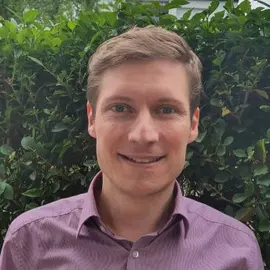Multifunctional Super-Continuum-Laser-Equipped Electro-Optical Probestation for Advanced Device Characterization
Beschreibung
Emerging optoelectronic materials are one of the main drivers of innovations in the fields of sustainable energy supply, advanced lighting and display technology. Development of such materials and in particular their application in electronic devices requires a detailed optoelectronic characterization, both spectrally resolved and in time domain. Within this context, the research equipment, consisting of a pulsed supercontinuum-laser with spectral filters, a time-correlated photon counting unit, and a temperature and atmosphere-controlled probe station, is supposed to be employed. Such a system allows for in-operando photoluminescence and photocurrent spectroscopy measurements with variable monochromatic light of tunable and high intensity. In conventional spectrofluorometers based on white light source (Xe lamp) and monochromator, this is not possible. Conventional transient photoluminescence setups provide only a selection of wavelengths dependent on the employed laser that is installed. Furthermore, commonly such experiments are done under ambient atmosphere, which is problematic for materials that oxidize, especially under illumination.With the proposed versatile setup we have a powerful platform to address several questions related to the emerging perovskite semiconductors that we are investigating. A big question are defects, as defects limit the performance of solar cells and LEDs. Using our setup in highly sensitive photocurrent spectroscopy mode, we intend to characterize these defect states and relate them to the structure of the material and interfaces in the devices. In pho-toluminescence experiments with continuously tunable excitation, we intend to use the wavelength-dependent absorption depth to probe the fate of photogenerated carriers, both in steady state and transient and correlate them with electroluminescence that we can measure at the same time. By this “depth profiling” we expect to better understand the role of vertical gradients on the nanoscale and the physics behind the newest 2D/3D hybrid structures that provide a defect passivation effect.Beyond electronic defects, mobile ionic lattice defects play an important role that give rise to new properties such as memristive behavior, which is a topic we are working on in our group. To develop efficient (photo-)memristors and deeply characterize the mixed-ionic-electronic conductivity, we will perform the measurements under different atmospheres in the test chamber. Furthermore, we will down-scale our memristors, which we will contact with the microprobes of the setup. Connected to our electric characterization tools, we can in-operando probe correlations between ambient parameters and ionic conductivity of our materials.
Eckdaten
Projektleitung
Projektstatus
abgeschlossen, 12/2021 - 11/2022
Institut/Zentrum
Institute of Computational Physics (ICP)
Drittmittelgeber
R'Equip
Projektvolumen
86'973 CHF
